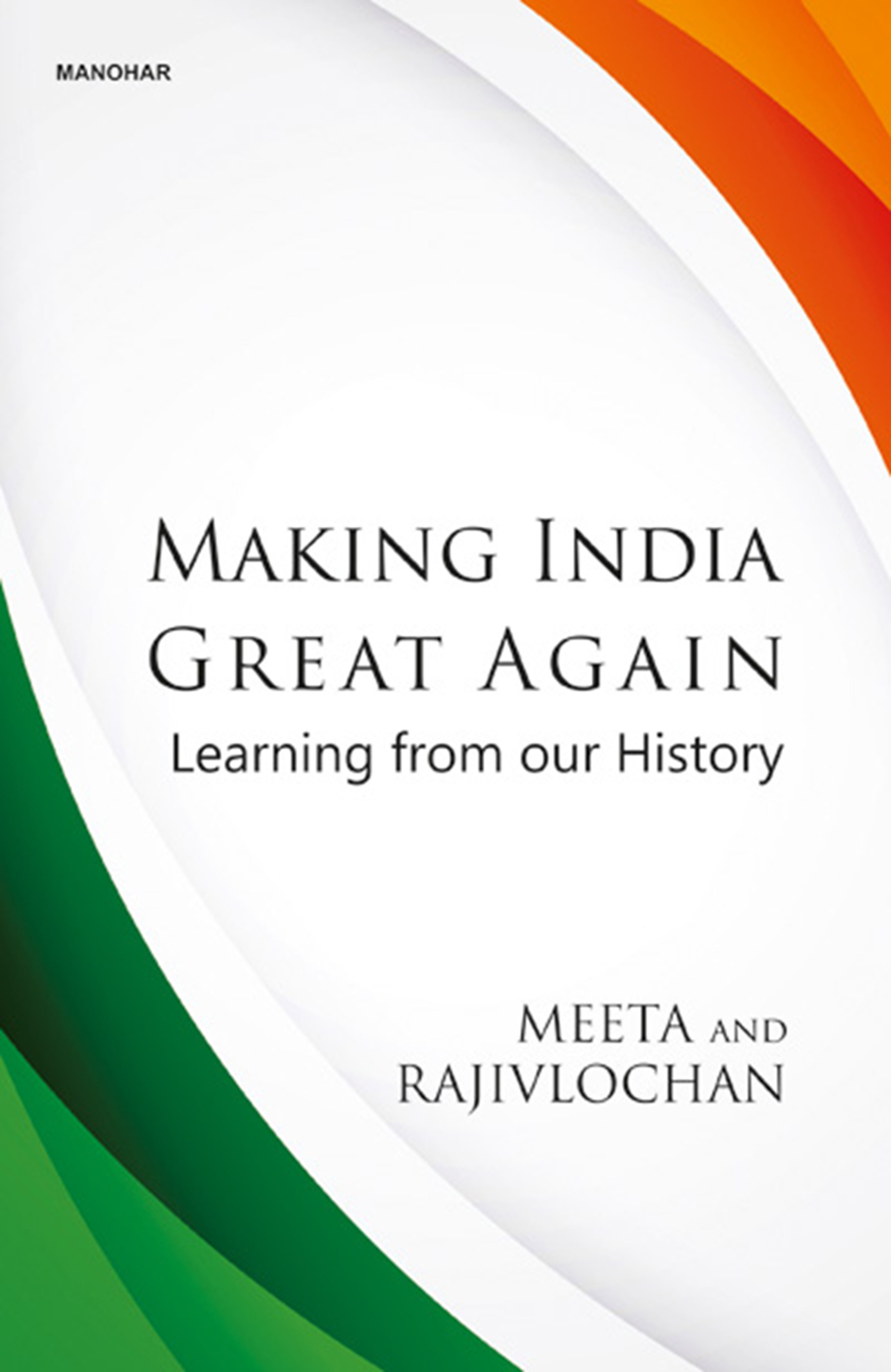Books such as Making India Great Again: Learning from Our History are meant to have a long life. However, books are also reflective of a particular time and a milieu. Context does have an influence on what is written and when it is written, as it is the context that determines the interest of the author and the prospective audience on a subject. In the current context it appears that the analysis of Indian history seems to be the flavour of the season, as seen both in popular discourse and in emerging scholarly works. It is within this milieu that the book by Meeta and Rajivlochan needs to be situated.
There are arguably three broad narratives on Indian history. The first narrative describes the origin of ‘India’, not as an indigenously constituted ‘nation’, but as an amorphous geographic entity that the British put together from several hundred native kingdoms. This narrative tends to understate the substantive contributions of pre-colonial India, and attributes most of India’s desirable values (democracy, equality, liberty) to the advent of modernity, pursuant to the colonial rule. The second narrative views India as one of the world’s most ancient civilizations and traces the Indian origin to the Vedic age. India in its pristine origin had unblemished attributes, and it is the recurring invasions, first from the Turks, the Mughals and the British that contributed to a dilution of values. A third narrative traces India’s origin not to a particular period, but as an evolving and syncretic culture over which every subsequent civilization right from the Vedic to the Buddhist to the Turks to the Mughals and the British have left distinctive impressions. As with the earlier Vedic civilization narrative, this narrative also tends to overtly glorify the positive contributions made by the constituent cultures.


Thank you for another informative site. The place else could
I am getting that kind of info written in such a
perfect way? I’ve a venture that I am simply now working
on, and I have been at the glance out for such info.
My webpage … vpn coupon code 2024
I am extremely impressed with your writing
skills as well as with the layout on your blog. Is this a paid theme or did you customize it yourself?
Anyway keep up the excellent quality writing, it is rare to see a nice blog like this one
nowadays.
Look at my web-site :: vpn special
We’re a group of volunteers and opening a new scheme in our community.
Your site provided us with valuable info to work on. You
have done a formidable job and our entire community
will be grateful to you.
my web site; vpn special coupon code 2024
I will right away take hold of your rss as I can not to
find your email subscription link or e-newsletter service.
Do you have any? Please allow me recognize so that I could subscribe.
Thanks.
Here is my site :: vpn special code
Incredible points. Solid arguments. Keep up the amazing
effort.
my site – vpn coupon code 2024
I’ve been browsing online greater than three hours today,
yet I by no means found any fascinating article like yours.
It’s pretty worth sufficient for me. In my view, if all website owners and bloggers made excellent content
material as you probably did, the net will be a lot more useful than ever before.
Have a look at my webpage … vpn coupon code 2024